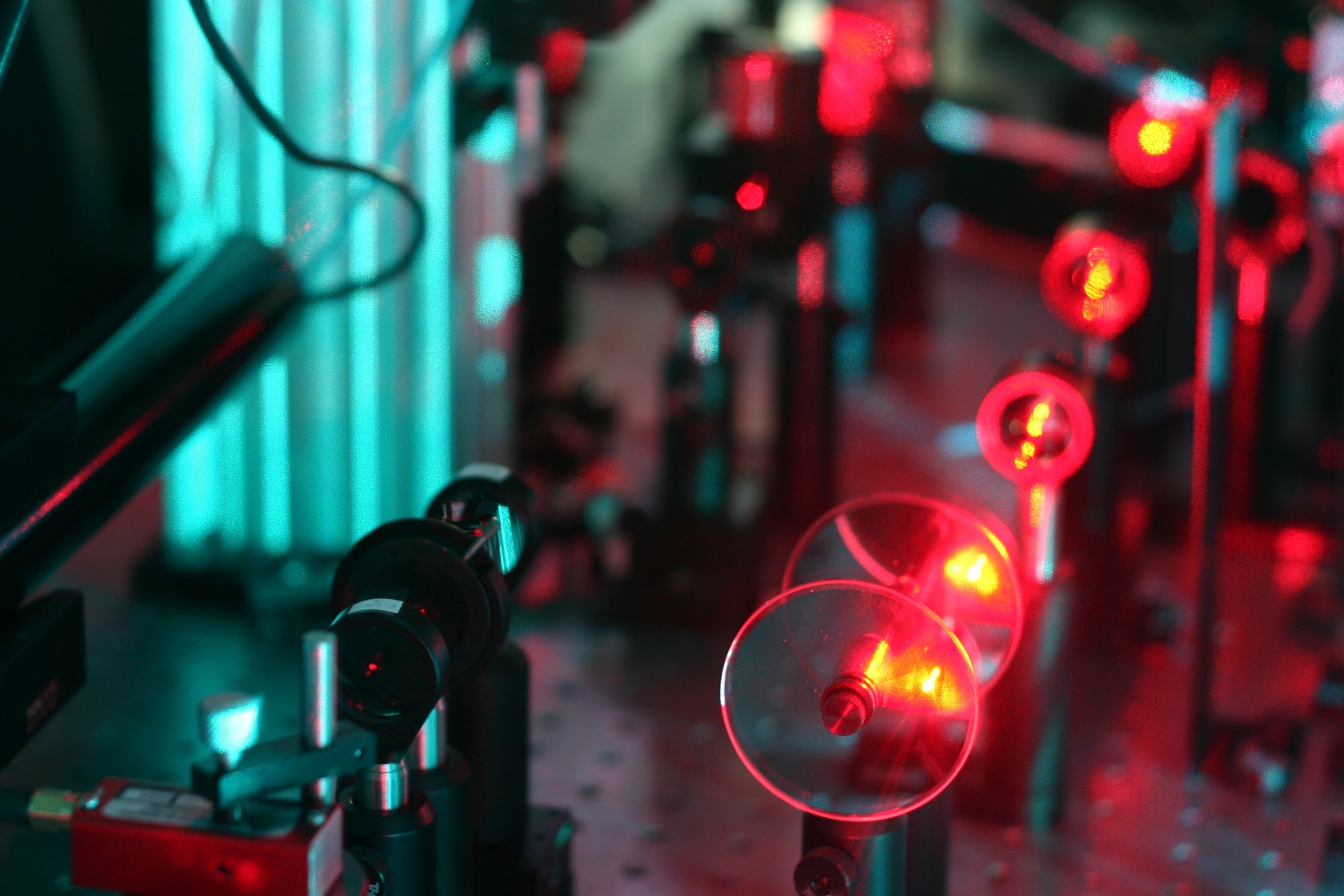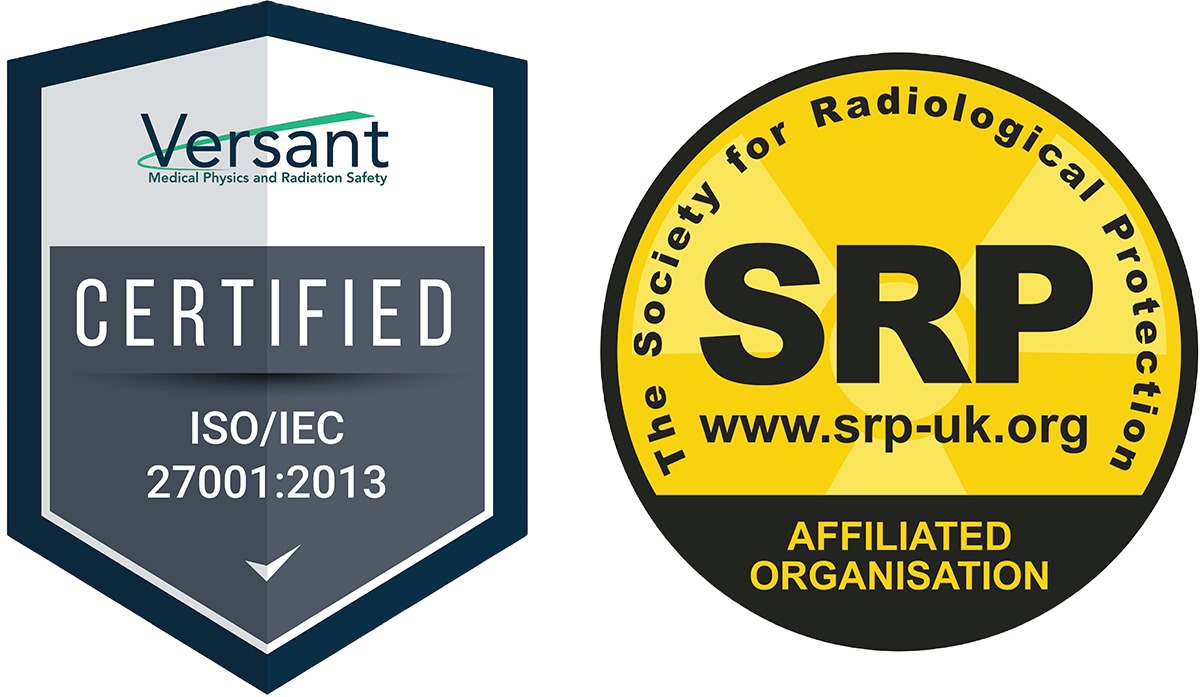The role of the Laser Safety Officer (or LSO) is a key element to a successful laser safety program.
But what is it that they do? Why are they an important part of a successful workplace safety program? And just what does this all have to do with radiation?
Let’s begin by defining what a laser is and how it works, along with some common applications for lasers.
What is a laser?
Laser is an acronym that stands for Light Amplification by Stimulated Emission of Radiation. The device, which emits a narrow beam of light, is made of a sealed tube with the laser medium inside of it. A pair of mirrors sit at either end of the sealed tube, and both reflect and transmit light in the form of the laser beam.
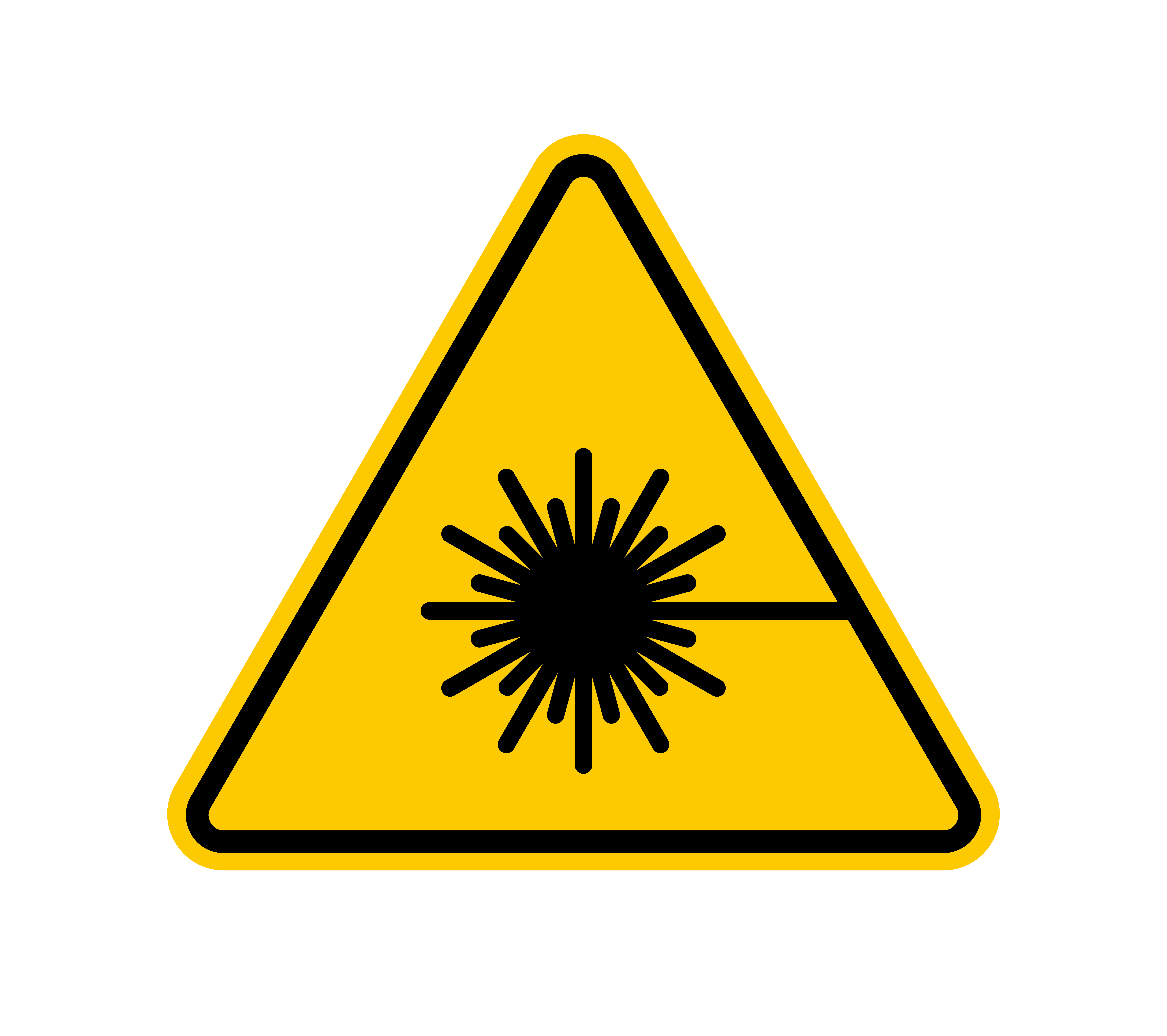
Energy applied to the laser medium excites and releases energy as particles of light. This light is a specific wavelength and singular color. Most importantly, laser light is coherent, which means all of the photons are in phase with one another. This allows laser light beams to be tightly focused to a tiny spot, and to stay very narrow over long distances.
Chances are, you’ve encountered lasers in your day-to-day life. In addition to their prevalence in science fiction stories and films, they are common in products like Blu-ray and DVD players, bar code scanners, at concerts or laser light shows, and as presentation tools.
Lasers are also frequently used for scientific and research purposes, in cosmetic procedures (tattoo removal, hair removal), LASIK eye surgery, construction, and material processing including engraving, drilling, and cutting. Lasers emit radiation in the form of light particles called photons, which are generally within or near the visible spectrum. Generally speaking, the frequencies of photons emitted by lasers are not harmful and do not behave like ionizing radiation or microwaves.
Hazards and Risks Associated with Lasers
Although lasers are not considered hazardous in the same way that ionizing radiation or radioactive substances like radium are, they can pose certain risks to humans when they are viewed or operated incorrectly. The coherence of the beam makes the light emitted by a laser much more intense than that of other light sources, so exposure to laser light can cause injury to the eye or skin.
Laser effects on the eye
When unprotected, the eye can be permanently damaged from direct or reflected laser beams. The type of damage depends on the wavelength of the laser beam. The retina, cornea, and lens are areas that typically receive the most severe damage.
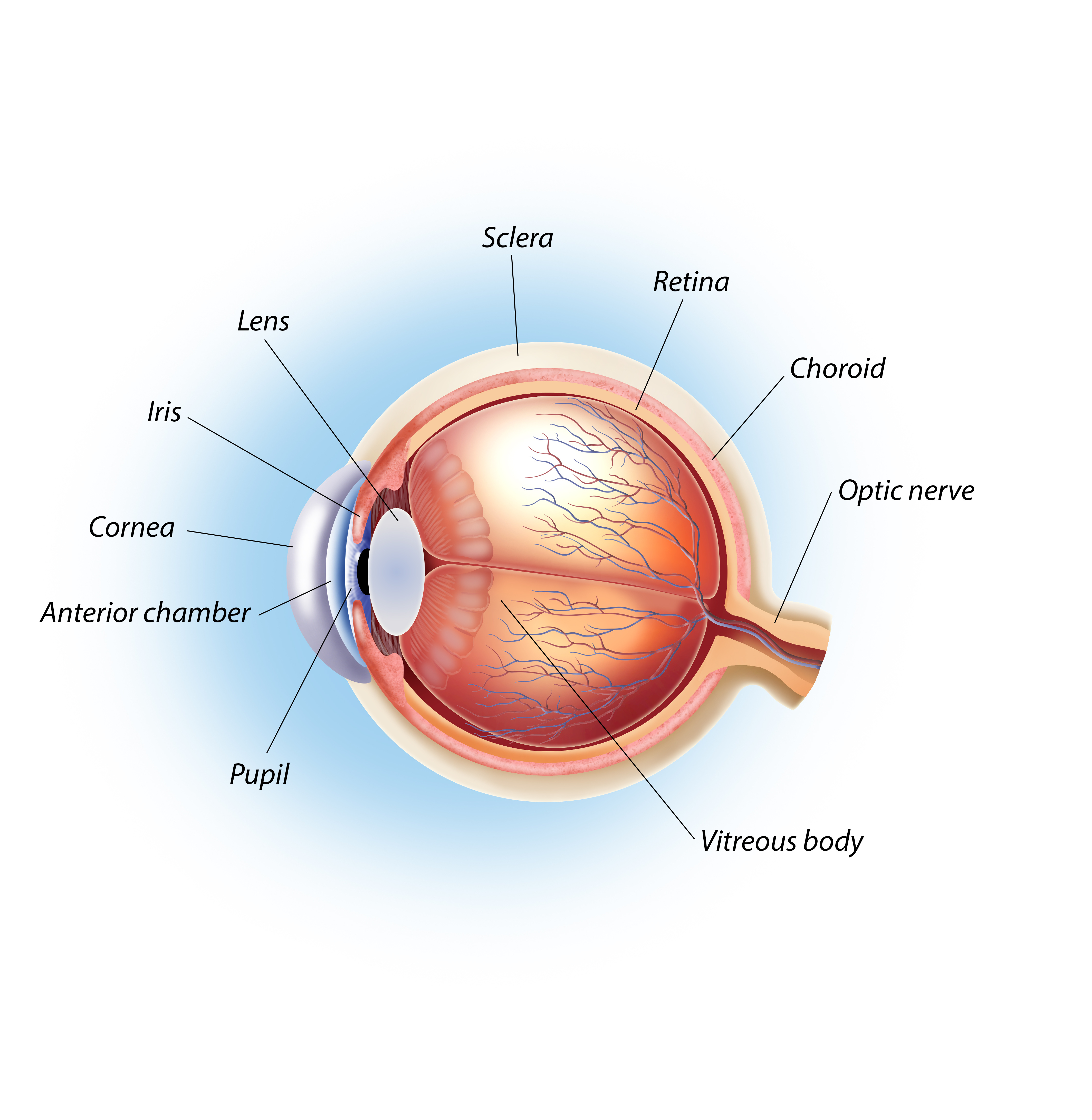
Laser beams in the visible to near-infrared spectrum (400-1400 nanometer) travel through the cornea and lens and can damage the retina. The highly concentrated, narrow beam of light is further focused by the lens and cornea, amplifying the intensity of the beam by a factor of approximately 100,000. This often results in thermal burns to retinal tissue structures which cannot be repaired, resulting in permanent effects such as vision loss.
Ultraviolet (100-400 nm) or far-infrared (1400-10,600 nm) laser light emissions are damaging to the cornea of the eye. The lens of the eye is damaged by radiation produced by near-ultraviolet (315-400 nm) light.
Protective eyewear designed for the wavelength and classification of the laser should be worn to protect against accidental injury from a laser. The LSO will identify the appropriate equipment for users and enforce its use.
Laser effects on the skin
Although not typically as serious as the effects on the eye, lasers can create thermal burns, blisters, and tissue damage to directly exposed skin. Exposure and severity depend on the laser wavelength, power (or wattage) of the laser beam, duration of exposure, and size of the irradiated area.
Most often, this tissue damage is temporary with varying degrees of painfulness, similar to a sunburn. There is a chance these burns can create scars or hyperpigmentation at the injury site. However, under certain levels, the heat from the laser beam can be felt on the skin before any serious damage can occur.
UV lasers introduce the risk of sunburn (erythema), skin cancer, and skin aging. UV-B lights are the most dangerous, in the 280-315 nm range.
What is a Laser Safety Officer?
Let’s start by breaking down what a laser safety officer is and the role they play in radiation safety or EHS program.
Regulatory bodies including the Laser Institute of America and the International Electrotechnical Commission have created laser safety standards that dictate the need for a Laser Safety Officer.
According to the ANSI Z136 standards published by the Laser Institute of America, the Laser Safety Officer is responsible for managing an organization’s laser safety program in university, government, or business institutions. They monitor and enforce control over laser hazards in work environments like research labs, mobile events, surgical centers, and more.
General Responsibilities
Like a radiation safety officer, the LSO is a record keeper, a training resource, a rule enforcer, and a safety guru. They are generally responsible for:
- Establishing the organization’s laser safety program
- Classifying the lasers in a facility
- Creating and approving standard operating procedures
- Enforcing the use of proper laser protection equipment and signage
- Laser safety training
- Performing laser safety audits and inspections
- Logging and investigating accidents associated with lasers in the workplace
- Stopping laser operation if necessary
Extensive record-keeping and documentation are necessary to make these responsibilities possible.
Classifications of Lasers
As mentioned above, a Laser Safety Officer is responsible for identifying and classifying the types of lasers in their facility. These classifications are based on the power level of the beam and the hazard they present to the user:
- Class I: These lasers do not emit laser radiation at known hazard levels. The hazard increases if they are viewed with optical aids such as magnifiers or telescopes. Direct eye exposure should be avoided.
- Class IA: This type of laser applies to lasers that are not intended for viewing, such as the laser used to scan groceries. The hazard increases if viewed directly for long periods of time. Direct eye exposure should be avoided.
- Class II: Low-power visible lasers that emit higher levels than Class I lasers but to do not exceed 1mW. Direct eye exposure should be avoided.
- Class IIIA: Lasers with intermediate power (1-5mW) such as laser pointers used in presentations. These lasers can be momentarily hazardous if viewed directly.
- Class IIIB: Lasers with moderate power, including laser light show projectors, research lasers, or industrial lasers. Immediate skin and eye hazards can occur when interacted with directly.
- Class IV: High-powered lasers which are hazardous to view under any condition, such as lasers used to perform LASIK eye surgery. They are a potential skin and fire hazard. Facilities which house Class IV lasers are under strict controls and regulations.
Any facility using a Class IIIB or Class IV laser or laser system is required to designate a Laser Safety Officer to oversee the safety of all operations.
Using Software to Manage a Laser Safety Program
Odyssey, Versant Physics’ cloud-based software suite, has applications in EHS, radiation safety, and laser safety. There are several Odyssey modules that benefit Laser Safety Officers specifically and can help them manage their day-to-day responsibilities.
Incident Management
A vital role of the LSO is tracking and reporting hazards, accidents, and workplace safety incidents involving lasers. The Incident Management module makes tracking and analysis of incidents simple. It helps LSOs correct problems quickly and prevent future incidents relating to personnel or workplace safety events.
The module also allows for efficient follow-up with open cases, analyzes trends in logged incidents, which makes it easier to create a safe, compliant workplace.
Machine & Equipment Management
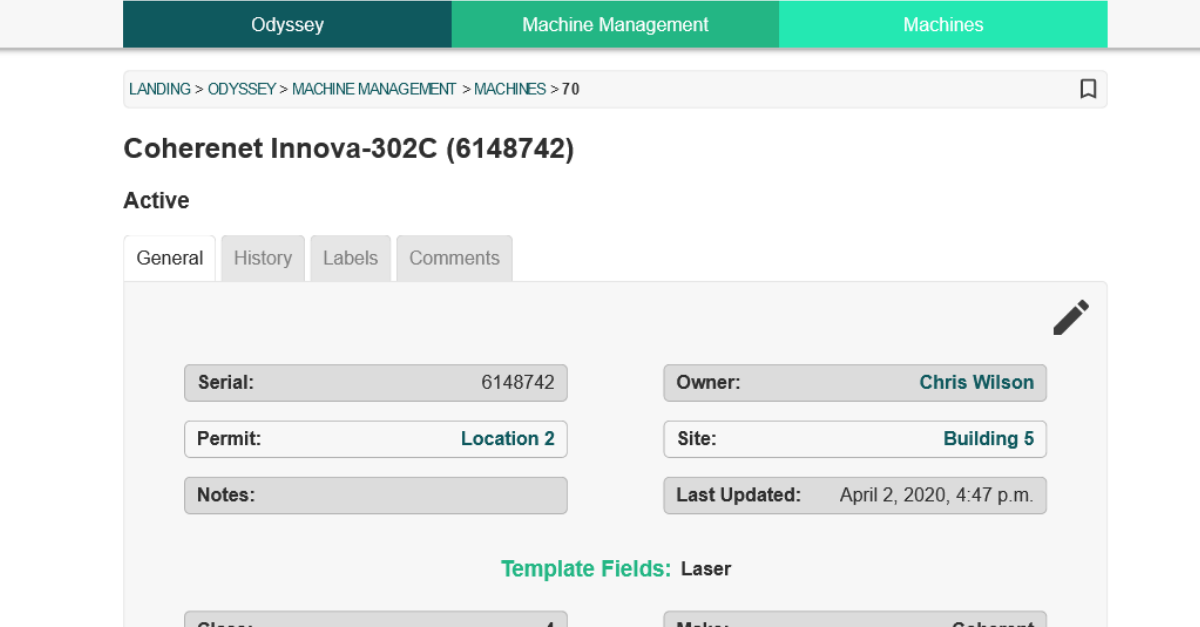
The machine and equipment management modules help LSOs store and track information regarding lasers, PPE, and more. Each machine or piece of equipment has its own profile which includes information like serial number, responsible owner, location, permit, and relevant documents like audits and registration certificates.
Reporting
To help with inventory holdings and incident management, Odyssey features a reporting module. LSOs can generate customizable reports from data within Odyssey, email them to Odyssey and non-Odyssey users from within the software, and create automated reports that can be sent out to specified users on a regular basis.
Permits
Individual permits for personnel, equipment, and other inventory in a laser safety program can be created and managed within Odyssey. The permits module allows LSOs to create authorized conditions on each issued permit and enforce them. It is also a great tool for record-keeping.
Learn more about Odyssey radiation safety software here.
Conclusion
Laser Safety Officers ensure the safe use of lasers in both medical and non-medical situations. They are necessary to maintain an efficient, well-managed laser safety program, which ultimately keeps operators and the public safe.

